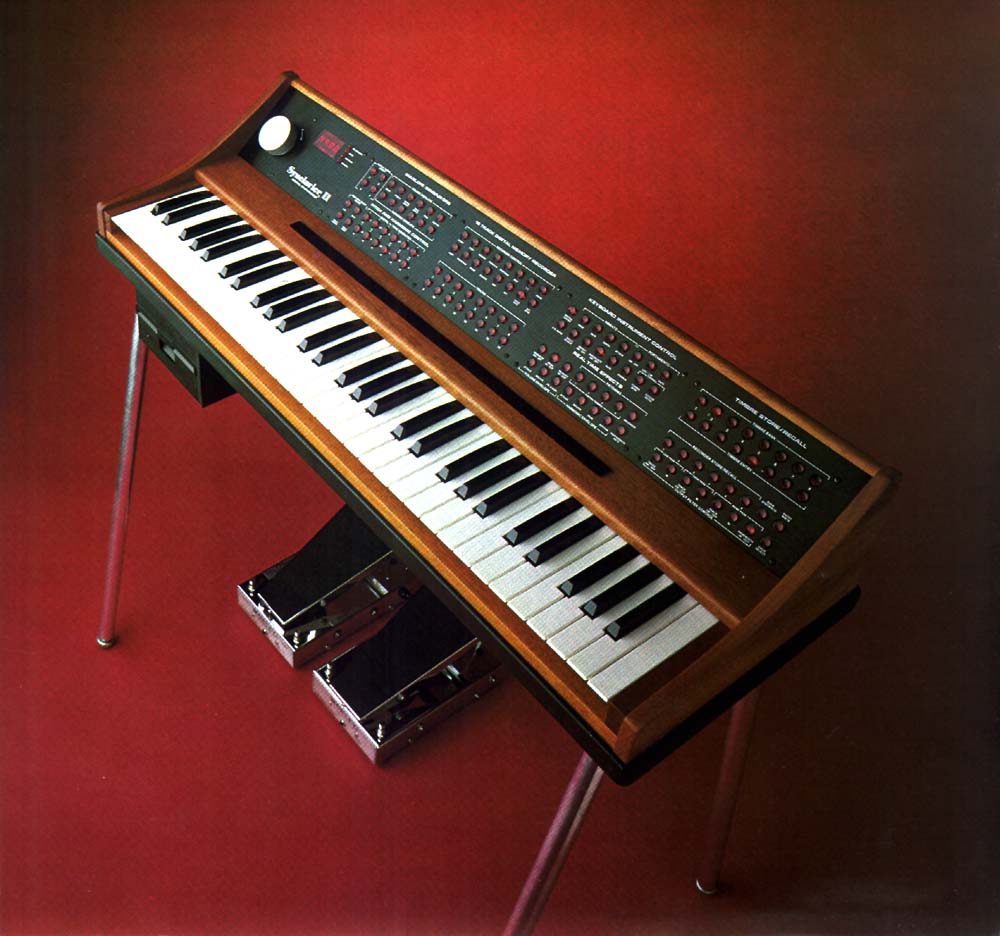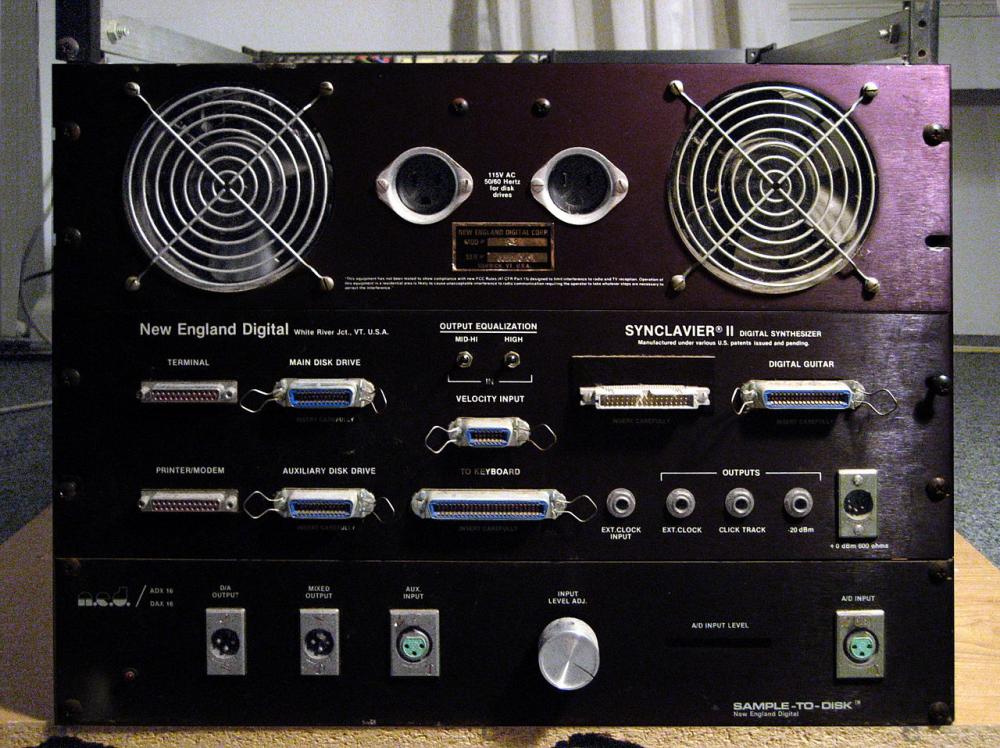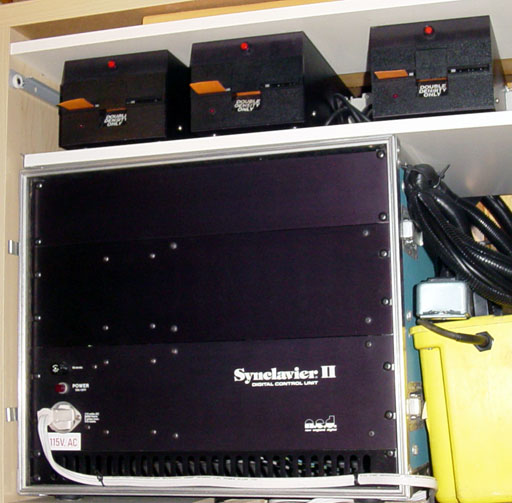Description | The first version appeared in 1977/78 but was soon replaced by the Synclavier II in 1980 with a new "partial timbre" sound editing feature (it tweaks the harmonics), built-in FM and additive synthesis, sampling, 64 voice polyphony, 32MB of waveform RAM (expandable to 768), 32 outputs, music-notation printing, multitrack sequencing, and digital hard-disk recording.
The original system evolved in the Synclavier II, which was released with the strong influence of synthesist and music producer Denny Jaeger of Oakland, California. It was originally Jaeger's suggestion that the FM synthesis concept be extended to allow four simultaneous channels or voices of synthesis to be triggered with one key depression to allow the final synthesized sound to have much more harmonic series activity. This change greatly improved the overall sound design of the system and was very noticeable.
Keyboard controller
Display and control wheel on VPK (1984)
Synclavier II models used an on/off type keyboard (called the "ORK") while later models, labeled simply "Synclavier", used a weighted velocity- and pressure-sensitive keyboard (called the "VPK") that was licensed from Sequential Circuits and used in their Prophet-T8 synthesizer.
Digital sampling
STD: Sample-To-Disk interface (c.1982)
The company evolved the system continuously through the early 1980s to integrate the first 16-bit digital sampling system to magnetic disk, and eventually a 16-bit polyphonic sampling system to memory, as well. The company's product was the only digital sampling system that allowed sample rates to go as high as 100 kHz.
Tapeless studio concept
Ultimately, the system was referred to as the Synclavier Digital Recording "Tapeless Studio" system among many professionals. It was a pioneer system in revolutionizing movie and television sound effects and Foley effects methods of design and production starting at Glen Glenn Sound. Although pricing made it inaccessible for most musicians, it found widespread use among producers and professional recording studios, competing at times in this market with high-end production systems such as the Fairlight CMI.
Technological achievements
When the company launched and evolved its technology, there were no off-the-shelf computing systems and integrated software and sound cards. Consequently, all of the hardware from the company's main real-time CPU, all input and output cards, analog-to-digital and digital-to-analog cards and all of its memory cards, and more, were all developed internally, as well as all of the software. This was certainly a monumental task at best in those times. In fact, the hardware and software of the company's real-time capability was used in other fields completely remote to music, such as the main Dartmouth College campus computing node computers for one of the USA's first campus-wide computing networks, and in medical data acquisition research projects.
|





